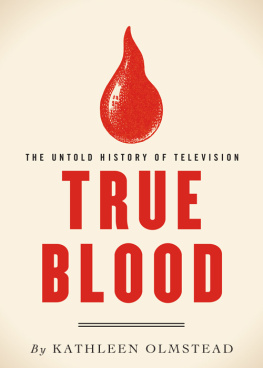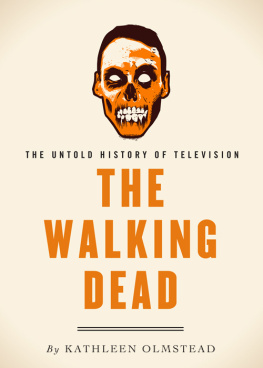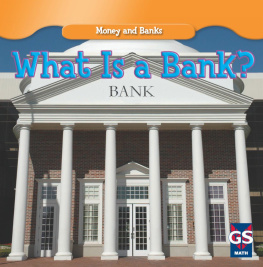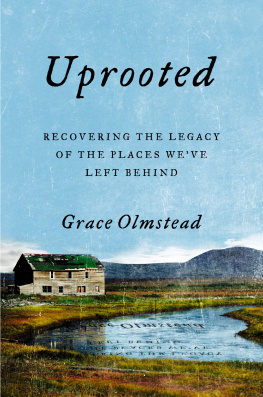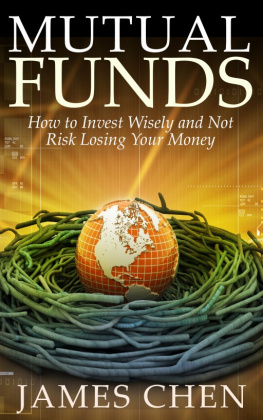New York City Mutual Savings Banks, 1819-1861
Copyright (c) 1976 by
The University of North Carolina Press
All rights reserved
Manufactured in the United States of America Library of Congress Catalog Card Number 75-28114
ISBN 0-8078-1265-X
Library of Congress Cataloging in Publication Data
Olmstead, Alan L
New York City mutual savings banks, 1819-1861.
Bibliography: p.
Includes index.
1. Savings-banksNew York (City)History.
I. Title.
HG1923.N7043332.2 V09747175-28114
ISBN 0-8078-1265-X
To Marilyn
Contents
List of Tables
14Rate of Growth of Deposits for Bank for Savings, Seamens, and Bowery, 1846-1850
List of Figures
6Government Securities as a Percentage of Total Assets of Four Mutual Savings Banks
7Mortgage Loans as a Percentage of Total Assets of Four Mutual Savings Banks
8Total Amount Invested in Government Securities by Four Mutual Savings Banks
9Amount Loaned on Bond and Mortgage by Four Mutual Savings Banks
10Mortgage Loans and Government Bonds as a Percentage of Total Assets of Six Mutual Savings Banks
11Mortgage Loans and Government Bonds as a Percentage of Total Assets of Seven Mutual Savings Banks
12Real Estate Mortgage Market with a Usury Law
Acknowledgments
Many friends and colleagues have assisted in the research and writing of this book. Jeffrey G. Williamson, Ralph Andreano, and Morton Rothstein labored through the early drafts. My debt to them for their insights and encouragement is enormous. Victor Goldberg and C. Daniel Vencill each supplied thoughtful criticisms on several chapters and were unusually tolerant of my frequent requests that they take a quick look at this section. Invariably they returned the material vastly improved.
In the formative stages I benefited from conversations and criticisms of John Bowman, Rondo Cameron, Donald Hester, Key Kim, Eric Lampard, and Eugene Smolensky. James Sturm not only read and commented on an early draft, but also tracked down loose ends for me in various New York libraries. In the later stages of my writing, Thomas Mayer read the entire manuscript, made valuable suggestions, and answered numerous questions. Elias Tuma relieved me of some of my teaching responsibilities at a critical time so that I could concentrate on research and writing.
I am grateful to Marguerite Crown and Sally Lu Lake for their editorial criticisms, secretarial assistance, and perseverance at the end.
I would also like to thank the editors of the Business History Review and the Journal of Economic History for permission to reuse material previously published in those journals. Specifically, parts of first appeared in the Journal of Economic History.
This book would not have been possible without the sincere interest of the officers of several New York City mutual savings banks who allowed me access to their banks records and provided me with research facilities. I am indebted to Alfred S. Mills, Chairman of the Board of the New York Bank for Savings, Edmund F. Wagner, Trustee Emeritus Chairman of the Board of the Seamens Bank for Savings, Clinton W. Bell, Senior Vice-President and Treasurer (retired) of the Seamens Bank for Savings, Eleanor C. Waters, Vice-President of the Seamens Bank for Savings, Robert J. LaFrentz, Senior Vice- President and Comptroller of the Seamens Bank for Savings, William H. Soth, Secretary (retired) of the Bowery Savings Bank, Le Roy Van Dine, Assistant Vice-President and Secretary (retired) of the Dry Dock Savings Bank, Francis J. Ludemann, Chairman of the Board (deceased) of the Manhattan Savings Bank, L. Emory Boyden, Vice-President (retired) of the Manhattan Savings Bank, E. Harold Kimbark, Senior Vice-President and Treasurer of the Broadway Savings Bank, Helen M. DeLuise, Vice-President (retired) of the East) River Savings Bank, and Joseph G. Reily, Senior Vice-President and Secretary of the Emigrant Savings Bank.
I would like to express special gratitude to Anna M. Flaherty, Vice-President (retired) of the New York Bank for Savings, and Mildred M. Berg, Corporate Secretary of the Seamens Bank for Savings. Their assistance and friendship have been invaluable.
Finally, I would like to thank my wife, Marilyn, for her tolerance, encouragement, many skills, and most of all for enduring all those anecdotes about the provident poor.
New York City Mutual Savings Banks, 1819-1861
CHAPTER 1
Historical Background and Trustee Objectives
Introduction
Study of the history of capitalism reveals that it is a rare business enterprise that lacks a capital stock or a profit account, is founded and managed by men who expressed no desire for monetary rewards, and lacks owner-entrepreneurs. Mutual savings banks are just such rarities. It has almost become axiomatic that the quest for profit not only is the fundamental rationale for economic activity but also provides the best guarantee for economic survival: in capitalist economies where the invisible hand ruthlessly weeds out weak and incompetently managed firms, the lure of personal reward attracts the bright and aggressive managers needed for success. Firms that do not adhere to the straight and narrow, that place charitable ideals ahead of their striving for profits, must accept a higher risk of failure. According to the conventional wisdom, philanthropic firms without owner-entrepreneurs are more sluggish and less efficient than their profit-seeking counterparts, guided by men whose personal fortunes are at stake. It is thus with some curiosity that we find mutual institutions flourishing in the rapidly changing, dog-eat-dog environment where the likes of Jay Gould and Daniel Drew stalked their financial prey.
More than twenty mutual savings banks were founded in the New York City area in the forty-two years preceding the American Civil War (1819-1861). For the first two decades of this period the story of these banks centers on the activities of one institutionthe Bank for Savings in the City of New York. This bank, which received its first deposits on 3 July 1819, was the product of the philanthropic zeal of several of New Yorks most prominent citizens. Initially the bank was only open six hours a week and transacted its business in a basement room of what was popularly known as the Old Alms House, which the city fathers provided rent-free. While operating in these humble quarters on a part-time basis with a voluntary management, the Bank for Savings rapidly emerged as one of the financial behemoths of the time. Within two years of its opening it had become the single most important financier of the Erie Canal and within a decade it bore a similar relationship to the internal improvement projects of Ohio and New York City.
Compared to other important savings banks, the Bank for Savings early growth was phenomenal. The Savings Bank of Baltimore, which was the subject of Payne and Daviss path-breaking study, took eleven years to accumulate deposits equal to the amount held by the Bank for Savings at the end of its first full year of operation. By 1861 another New York institution, the Bowery Savings Bank, surpassed the Bank for Savings as the nations largest mutual. At that time each of these banks commanded deposits in excess of $10 million, and a third New York mutual, the Seamens Bank for Savings, was approaching that mark.



